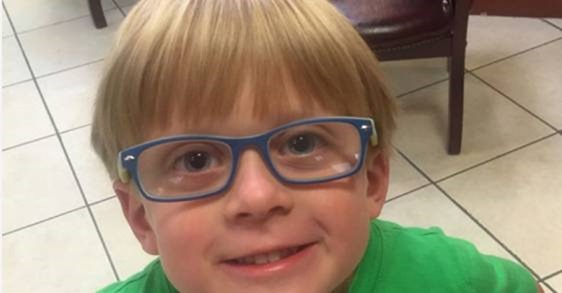
Carter Brischler was a pretty normal boy just a short while ago. The previous summer season included him performing flips off his grandfather’s motorboat and planning to begin classes a few months later. However in just over half a year, the boy would find out that he had a rare ailment that was swiftly targeting parts of his brain and that he would end up in and out of the hospital incapable of hearing, seeing, eating, or even moving or speaking.
Brischler’s family members have launched a pursuit to provide him as many unforgettable memories as they are able to prior to him losing even more.
Carter is one of an approximated thirteen thousand individuals within the US allegedly plagued by ALD, or adrenoleukodystrophy, an uncommon hereditary condition that stops the system from deteriorating fatty acids in the brain. The build up of these types of long chained fatty acids leads to an insulating tissue layer that encompasses nerve cellular material inside the brain to degrade. If one doesn’t have this, cerebral signals cannot venture to the other parts of the human body.
Carter’s dad, George sadly expressed, “He can’t move around or go where he wants to go or play with what he wants to play with. He can’t see; he doesn’t know if it’s day or night. It’s an awful thing to have to watch him go through.”
“Everything’s been taken away from him that he can use to enjoy life,”
As reported by StopALD.org, the more destructive variation of the sickness is more predominant in men. The signs of the affliction commonly develop before the time the child is eight, and ends up in either loss of life or long-term incapacity inside of five years after detection.
Carter’s medical doctor Dr. David Kronn, told FoxNews.com “It can be a…child…difficulty walking, difficulty with vision, difficulty with hearing,” “Sometimes they… may have skin color changes… and they may have difficulty fighting infections…they may come in with sepsis”
With regard to Carter, it began in the fall of 2015 with something that his mother and father believed could be a lazy eye.
His mother and Carter went to a specialist when they supplied the boy with glasses and stated the prescription would improve and perfect his eye ball. However the glasses only resulted in making the situation worse, and when he began becoming confused about his surroundings, his mom and dad could tell things were drastically wrong.
Stacie proclaimed, “He would be running and then stop…We’d be like, ‘Buddy, go get your brother,’ and he’d be like ‘Where?’ And we’re like, ‘Right there,’ and he’d go, ‘Oh’ and then just run anyway.”
After various medical sessions and no indicators were produced, Stacie had taken Carter to Bon Secours, a nearby hospital.
“I finally got tired of talking to different doctors and getting the same results,” Stacie said. The experts at the medical center determined there was abnormality within parts of her son’s brain.
Carter had then been moved to another medical location, wherein he remained for a and underwent testing. However the Brischlers stated even though health professionals assumed Carter was battling the impact of the aforementioned disease, the testing center inspected for long-chain fatty acids as opposed to the common screening technique, which examines very long chain fatty acids. Therefore Carter hadn’t be given a resolute proper diagnosis of the condition until ultimately he visited Dr. Kronn months later..
Kronn stated that specialists make use of what’s known as a Loes score to determine the advancement of white matter adjustments by utilizing an MRI child with ALD. Typically the condition has advanced past the point of being healed effectively if the Loes rank is beyond 8.
Procedural possibilities had been laid out to the Brischlers, but due to the fact of the progressive degree of his disorder, the prospects were not desirable.
The family understood they had an extremely hard choice to come up with. There was a transplant surgery available but Brischlers eventually decided to go without the procedure and come up with as much experiences as they could.
Carter has honored a Disney Cruise getaway from the Make-A-Wish Foundation. Even though his vision had vanished a few weeks before that, the wonder of the occasion had not been wasted on him.
His Mom described, “He swam all day, he ate all day, he really- it was magical,”.
Discovering the condition early continues to be a difficult task.
There is a law created around this known as Aiden’s law and it has currently aided medical professionals to recognize at least 40 instances of ALD, not simply in boys who may become afflicted but also women that might give it to their children.
“How is there something inside you, and you’re unaware that you could have it, and it could be passed down to boys who could have symptoms from it or [to] girls who could give it to their child?” Stacie said. “How do you not know that’s there? That’s pretty important. It affects your life.
At this moment, the family is simply dedicated to creating countless quality experiences as they’re able to stuff in amongst doctor’s consultations and hospital visits for young Carter.
